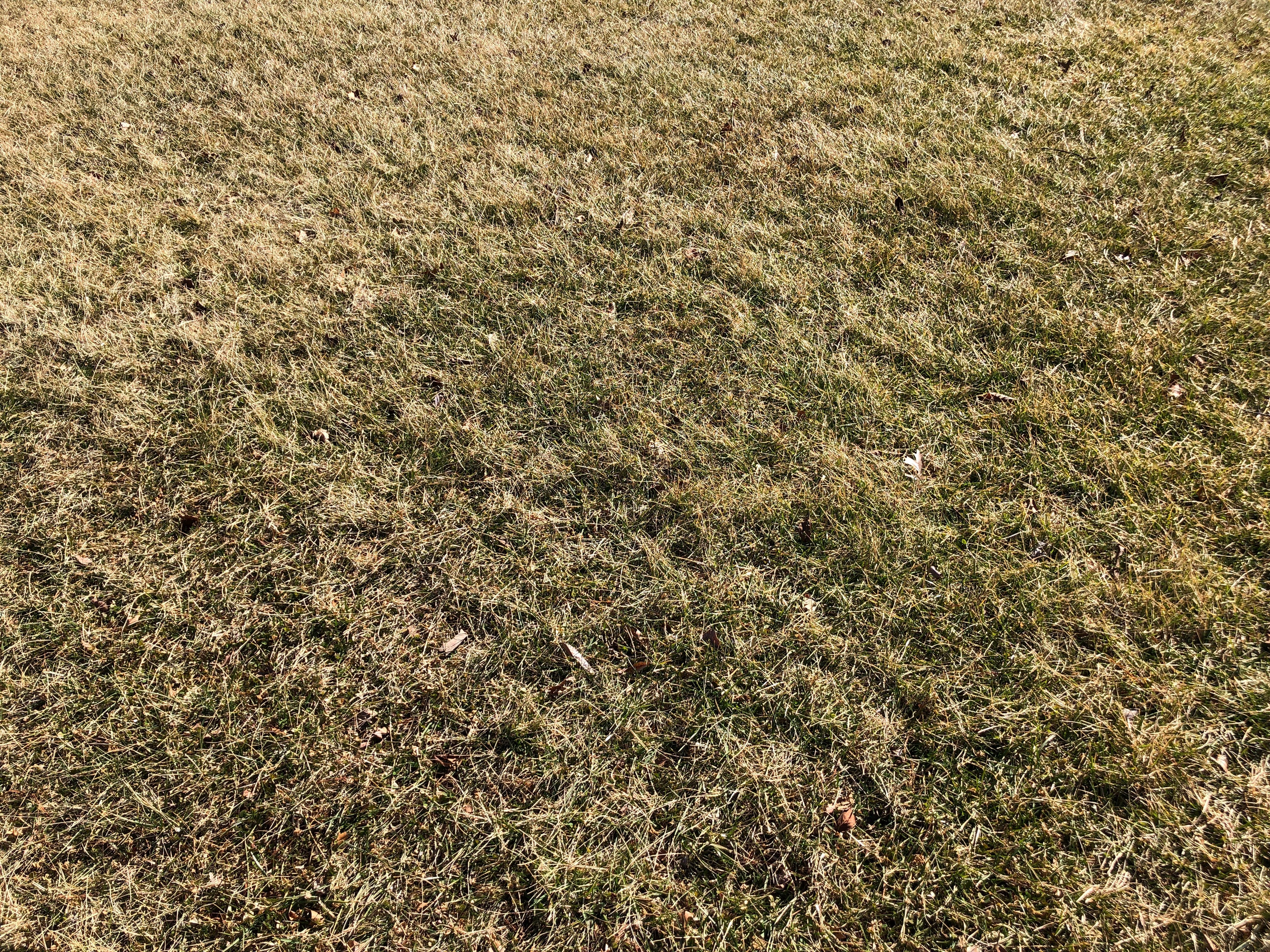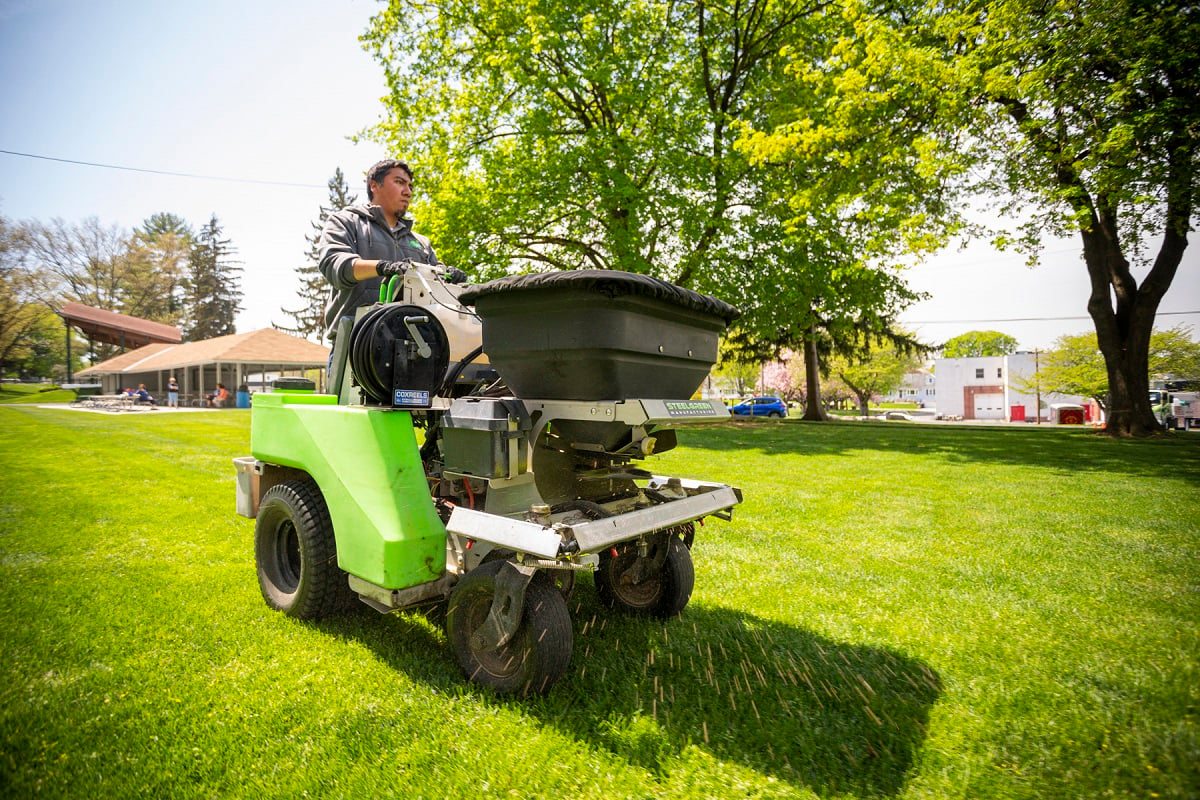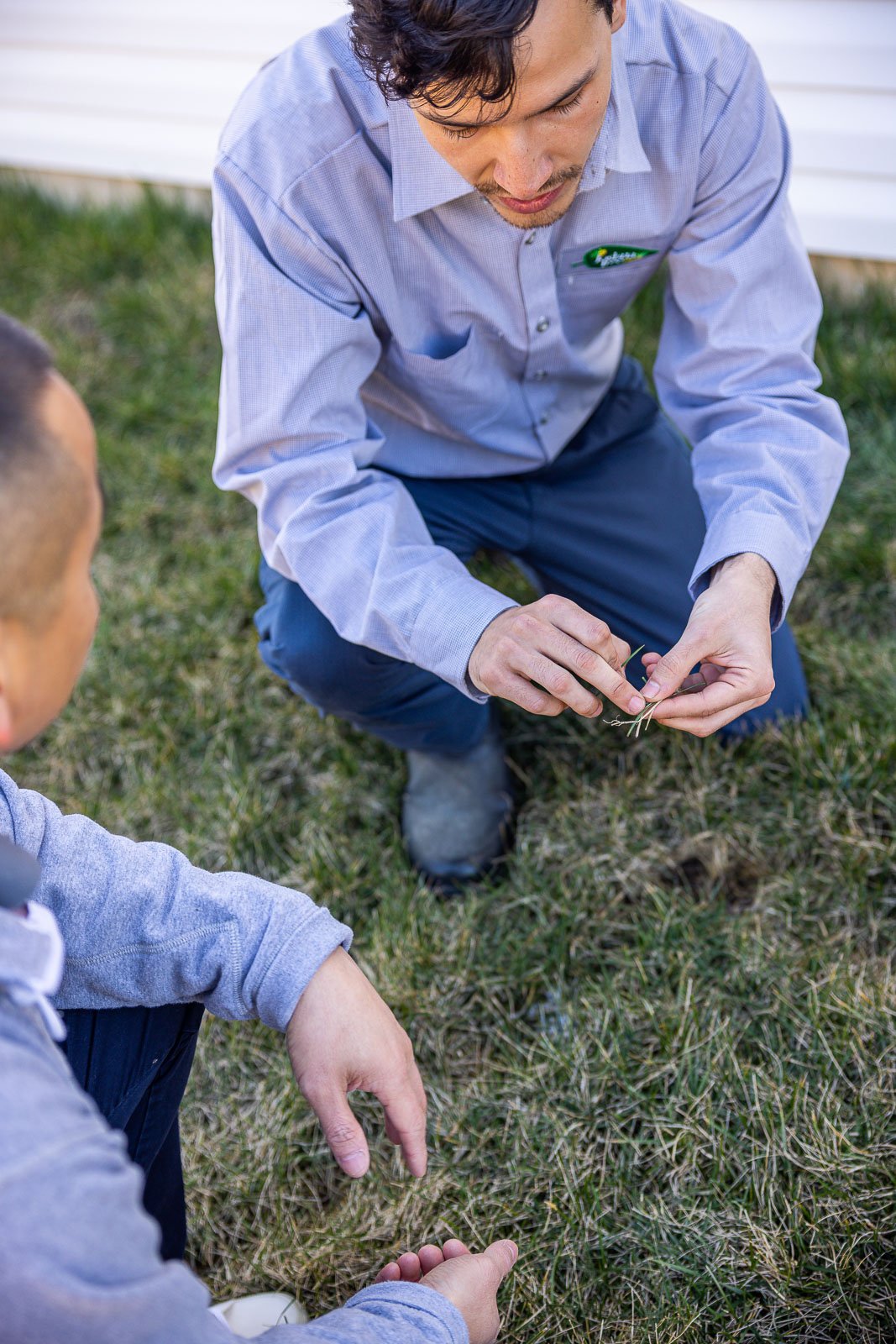When it comes to preventing slips and falls and quickly melting (or preventing) ice accumulation, salt is commonly used on roadways, sidewalks, driveways, and other hardscaping. While this can work wonders on ice, it can do serious damage to lawns and plant material, if it winds up in your turf or landscaping.
Salt damage is a common winter lawn damage problem. If you’ve experienced salt damage on grass, you might be wondering what you can do.
There’s a lot of information out there on how to repair a salt-damaged lawn, but we’ll set you straight on what to trust and what not to waste your time on.
At the end of the day, we want to help set you up for lawn care success.
What Causes Salt Damage on Grass?
When salt ends up on the lawn, it causes damage by drying out the lawn’s roots. If the lawn has only gotten a little bit dried out, it might mostly bounce back. However, if the salt damage on the grass was too severe, your lawn might have died in those areas.

We’ve talked in previous articles about the fact that you can’t just bring a dead lawn back to life. If your lawn has truly died, you’re going to need to consider restoration techniques (which we’ll talk about further on on this article).
First, let’s talk about how to immediately address salt damage on grass.
How to Repair a Salt-Damaged Lawn
If you perform a Google search on how to “repair a salt-damaged lawn” you’ll find that there are various tips on what you can do.
One recommendation that we’ve seen is watering the lawn in those areas. While the idea here is to try and dilute or wash out the salt, this is potentially risky in that it might actually send the salt further down into the ground.
We’ve also seen advice about using gypsum, a product that can be used to help improve soil structure. Gypsum is said to have the ability to “flush salt” from the soil. This is not something that we’ve tried before so we can’t make a definite recommendation as to whether it would be successful or not.
Gypsum is an expensive product and we hate to see anyone disappointed with it not working.
The truth is, if your lawn is severely damaged by salt to the point where it has actually died, there simply isn’t a quick fix. Ideally, you’re going to want to rake out the dead grass and discuss what restoration options you have with a lawn care provider.
While we know that most people want a quick fix, this just isn’t one of those scenarios. As a lawn care company that has always promised to be transparent with you, this is one of those cases where that hard truth is necessary.
How to Restore Dead Grass
If you have dead spots as a result of salt damage, you’ll want to talk to a lawn care professional about your options. Most of the time these salt-damaged areas are only along hardscaping such as a driveway or a walkway.
One service for growing new grass is aeration and overseeding. This is one option if after raking out the dead grass, you still have some healthy growth in those areas.
While we know that you’re going to be tempted to seed right away, we do not advise seeding your lawn in the spring.
The main reason for this is because it will affect the ability to apply crabgrass pre-emergent products. The products that prevent crabgrass from germinating will also prevent your new grass from growing. That means we would not be able to apply these products in those seeded areas.
Chances are high that you’re going to end up with tons of crabgrass growing in those salt-damaged spots.
Instead, we recommend waiting until the Fall to seed.
But if you’ve lost an entire strip of grass, you’re going to need to consider a heavier-duty restoration service that involves digging out that soil (as there’s likely still salt in it) and starting over.
A Proactive Approach to Avoid Salt Damage on Grass
As the saying goes, hindsight is 20/20. It’s much easier and less costly to prevent salt damage on grass than it is to try and repair it.
Going forward (next season), it’s important to think ahead about your plans to keep ice off your walkways and driveways. While it does cost more money, we recommend using a deicing product that is safer for turf.

Calcium chloride products instead of sodium chloride products are a better choice.
These products do cost a little more but considering how expensive it can be to repair a damaged or dead lawn, we think it’s worth it.
If you’re using these products yourself (on walkways, sidewalks, and your driveway), you can also take more care to be cautious about where they are applied. We recognize that if the salt is coming from the roadways (and applied by a plow driver), it might be more out of your control.
How to Repair Winter Lawn Damage
Of course, salt damage on grass is not the only winter lawn damage that can occur. We’ve written an entire article on other common winter lawn problems that you might experience.
Other potential problems include snow mold, winter pest damage, crown hydration, and winter desiccation. Sometimes damage also occurs if the plow itself accidentally winds up in your turf areas. This is a key reason why we recommend having the edges of your driveway marked if you do have it professionally plowed.
Also keep in mind that the healthier your lawn is to start, the better it should fare when faced with winter lawn problems. Keeping up with regular lawn care will help you grow a stronger and healthier lawn that should bounce back from trouble faster.

That’s not to say that you’ll never have problems. But you’ll be in better shape than if your lawn was already struggling.
While winter lawn damage can be a huge source of frustration, with a lawn care professional on your side, you’ll have access to professional guidance and recommendations.
Sometimes there’s no simple fix, but you can still rely on a professional to guide you toward the best choices for your lawn.
At Joshua Tree, we are always paying close attention to what your lawn needs, no matter what time of the year it is. Sometimes unexpected problems even arise which require treatments beyond what would typically be performed. But we’ll help you figure all of that out!
With an expert eye on your property, problems can be spotted and addressed. That will add up to valuable peace of mind.
If you’d like to know more about how Joshua Tree Experts can help meet your lawn needs at your home, or you have more questions, we’re here to help! Get in touch or give us a call at 833-JTE-TREE to get free expert advice and learn more about our lawn care program options!
Image Source | Brown Grass




